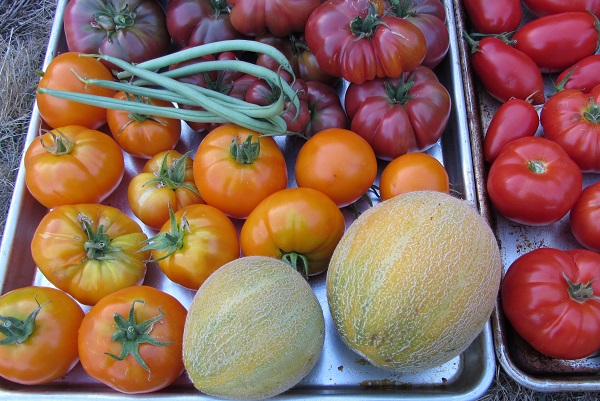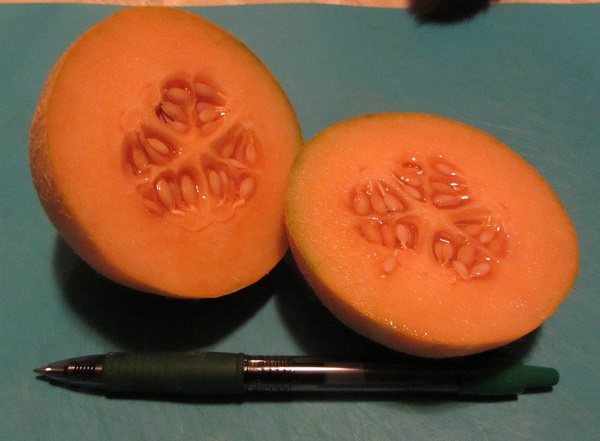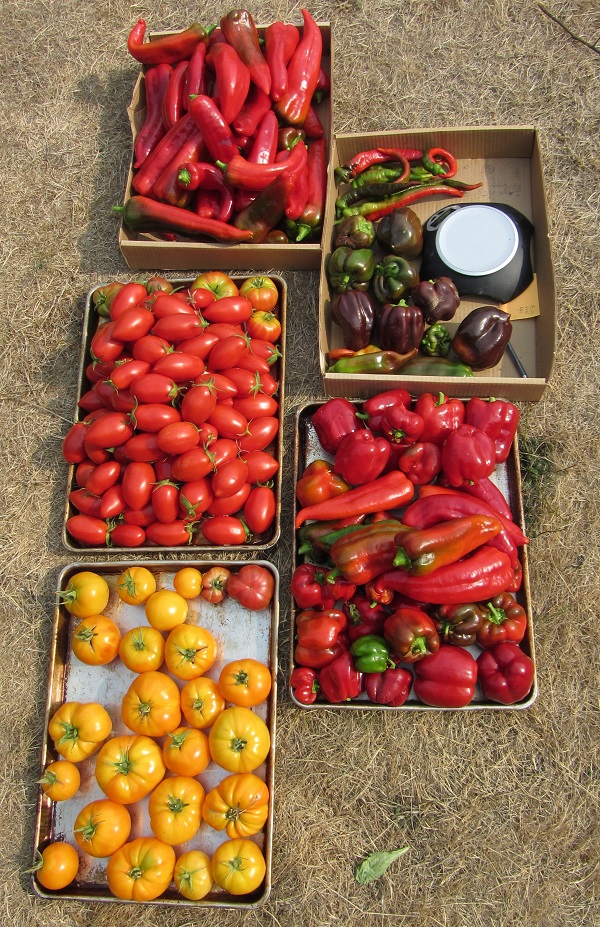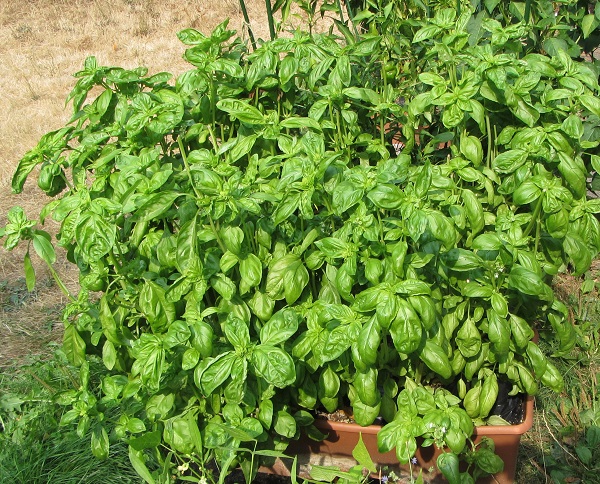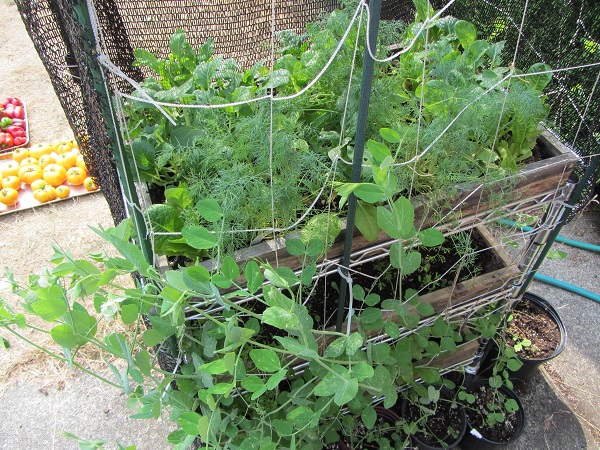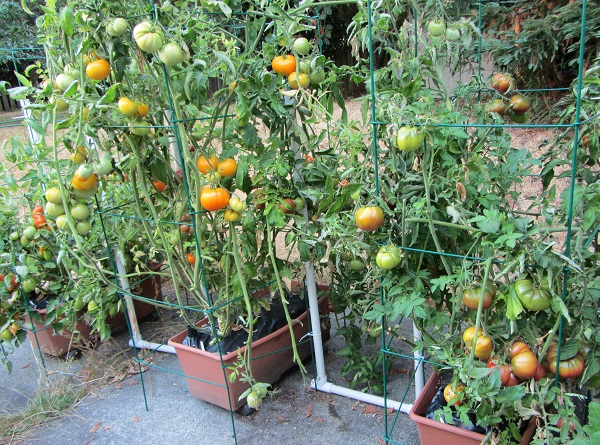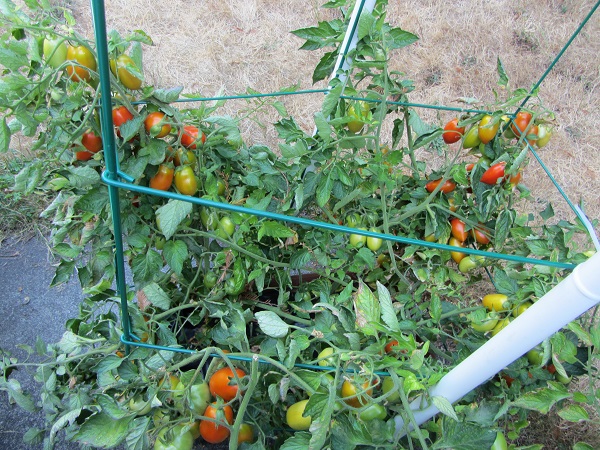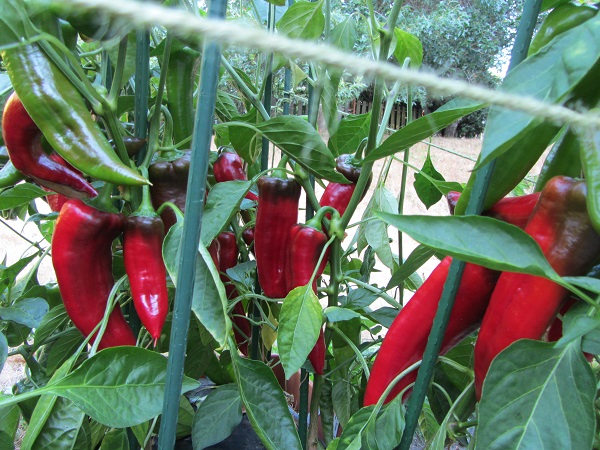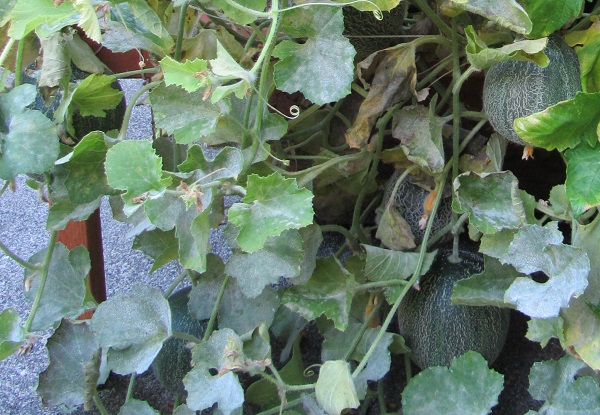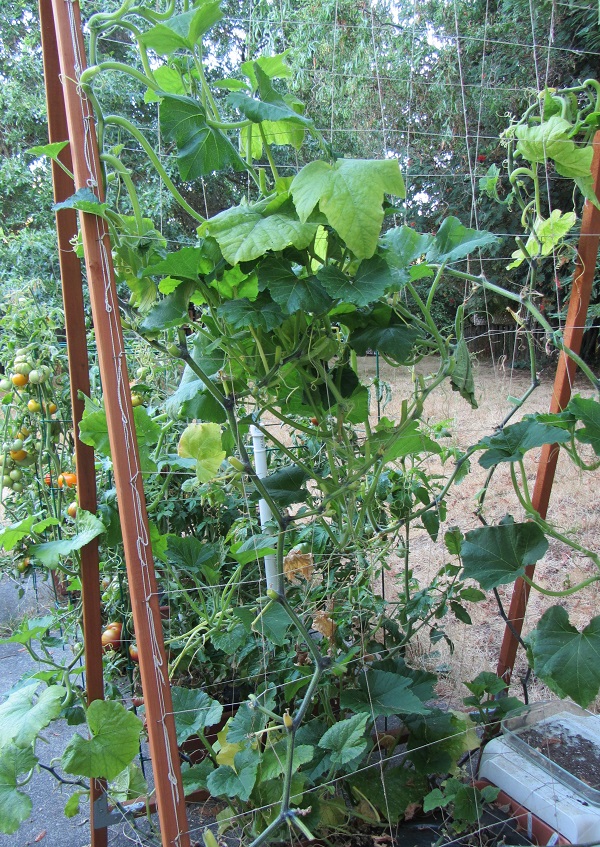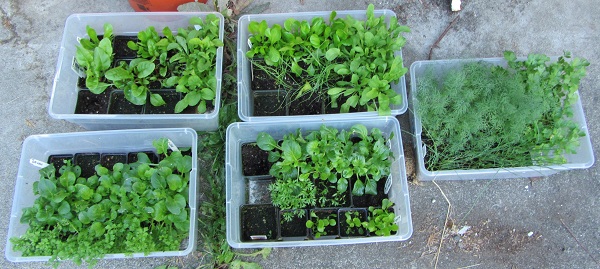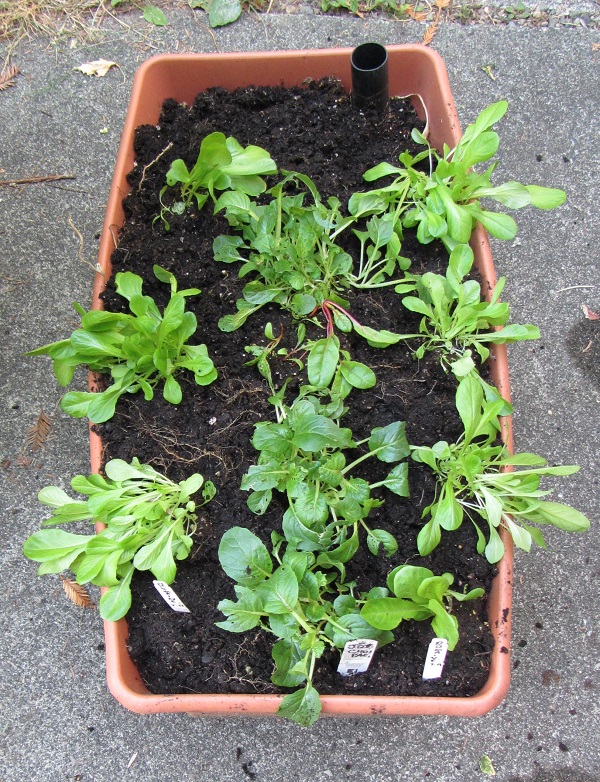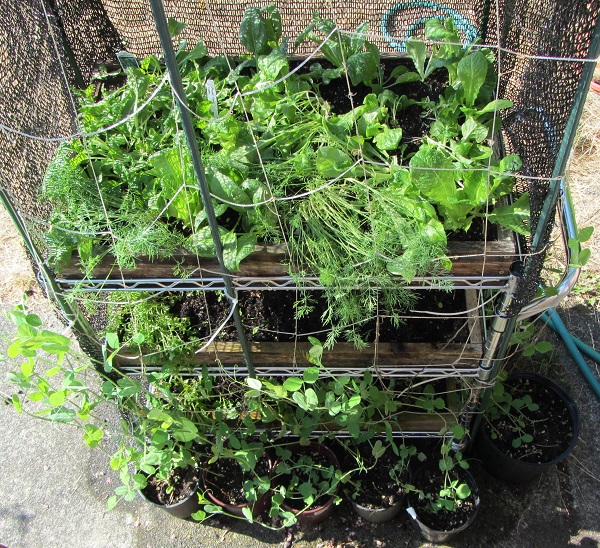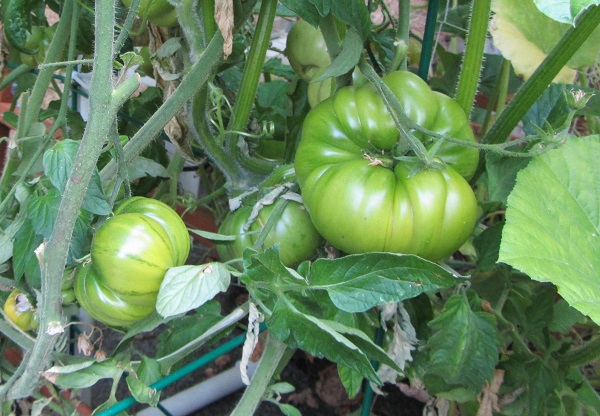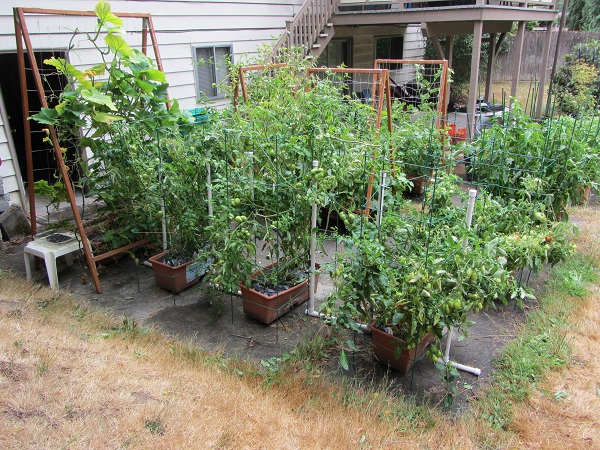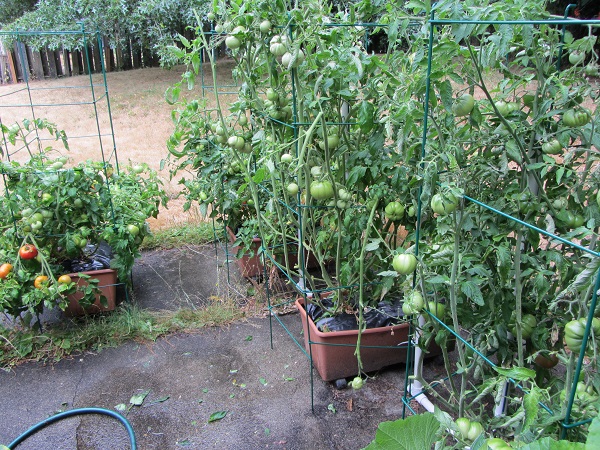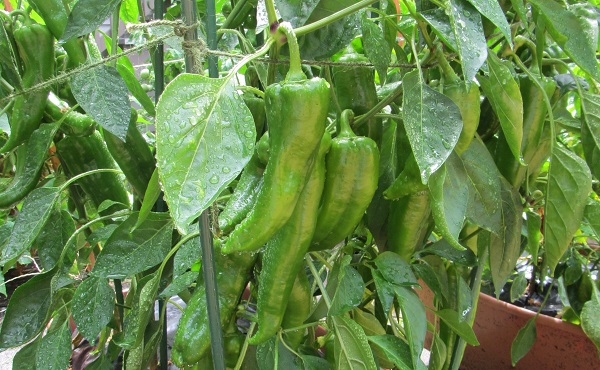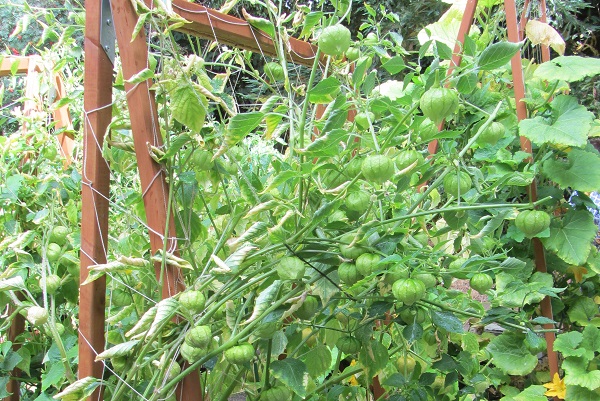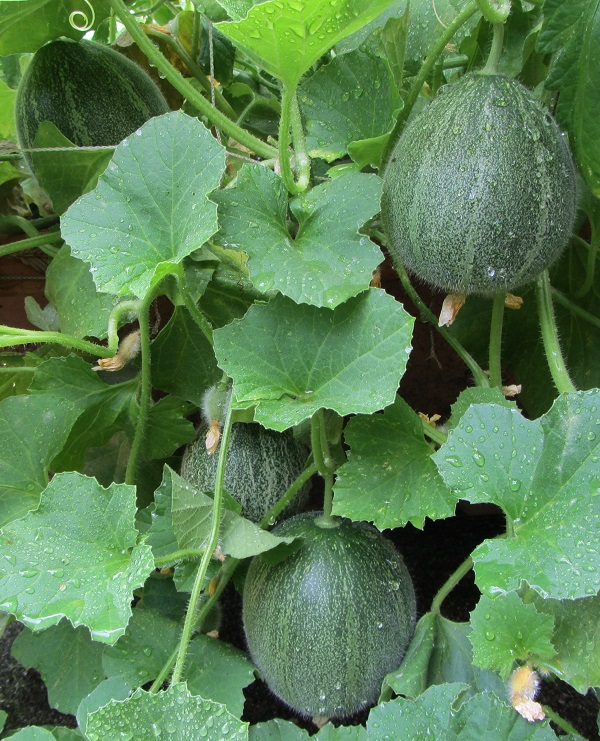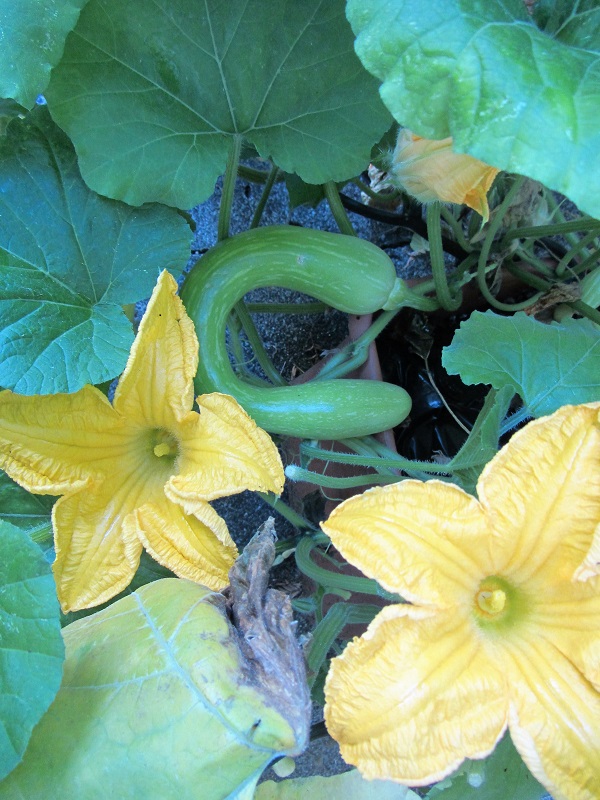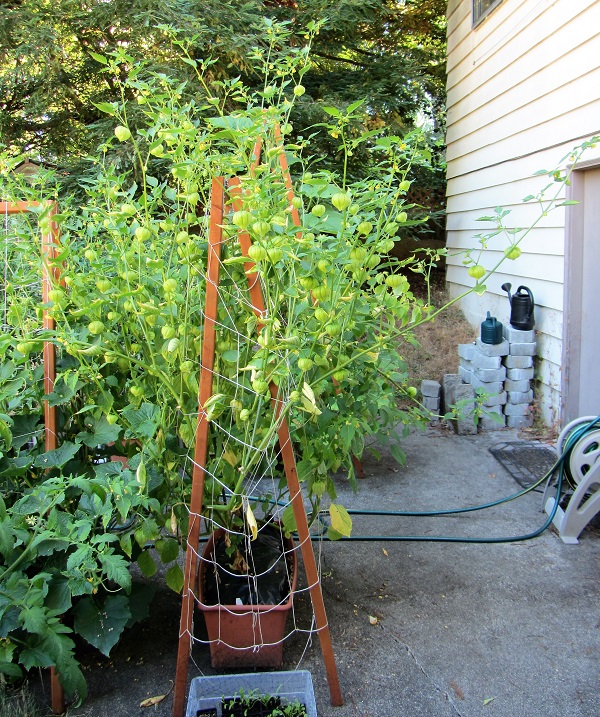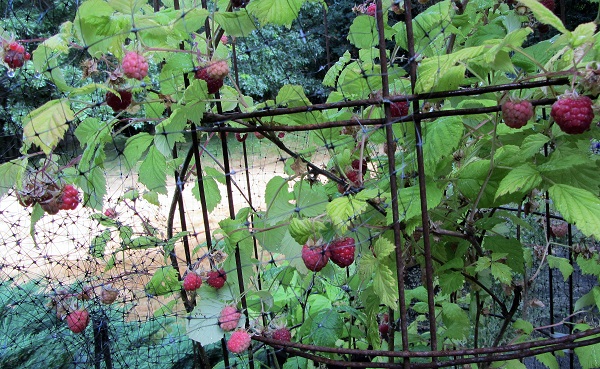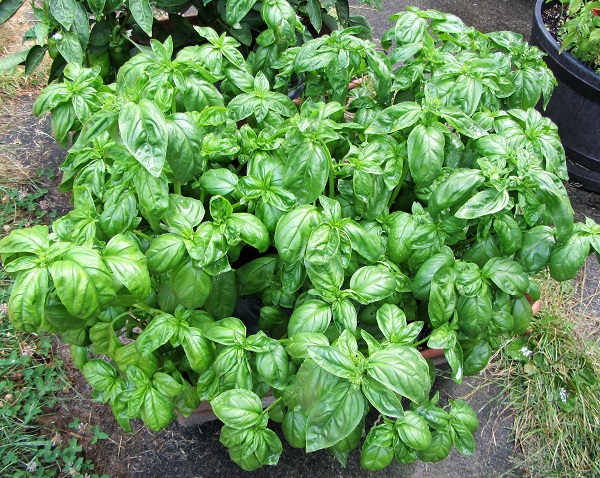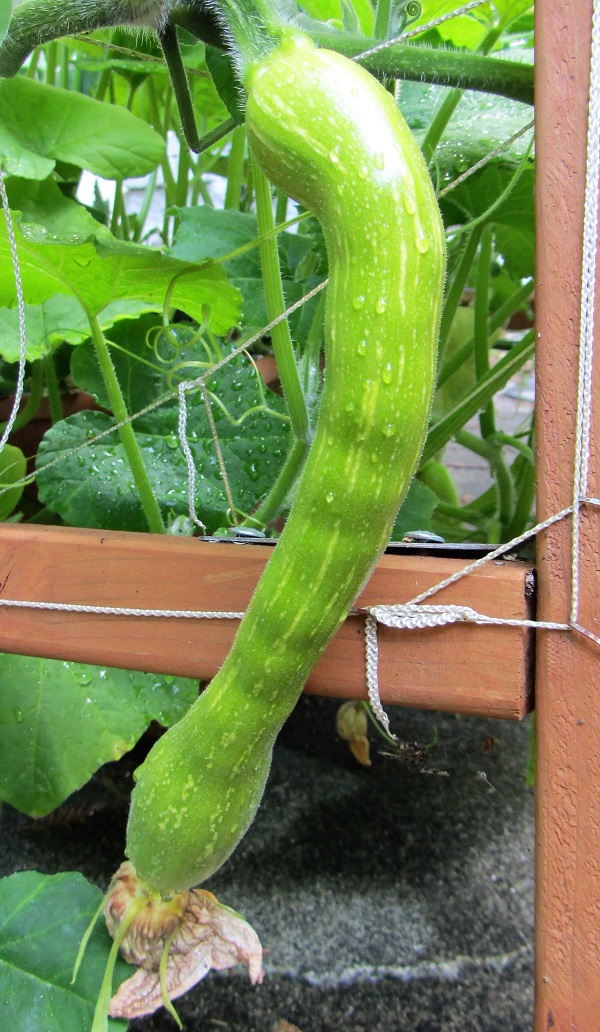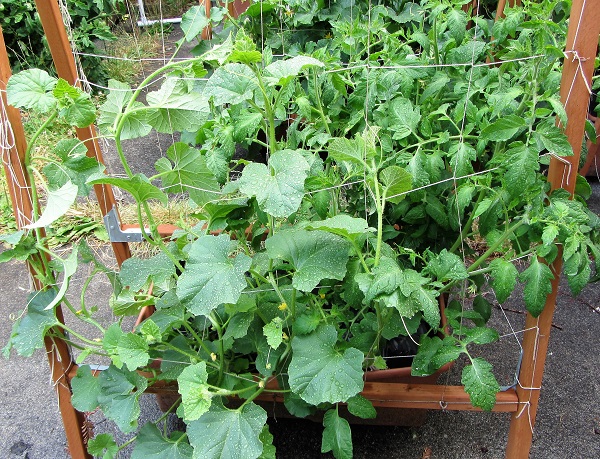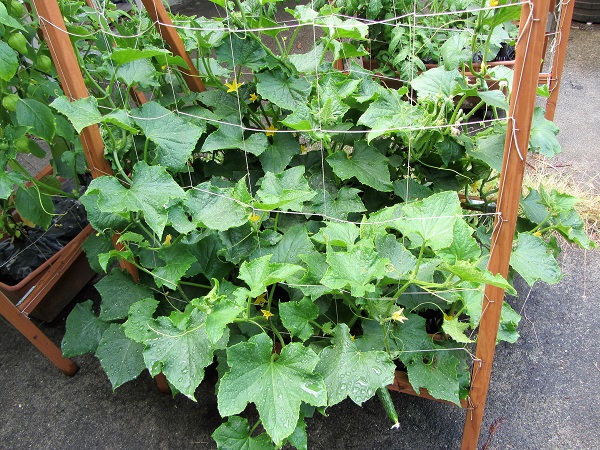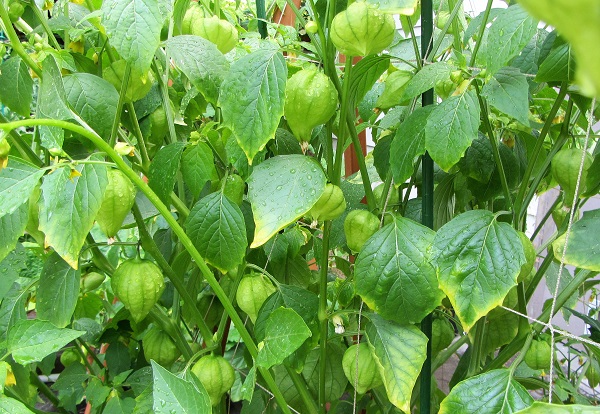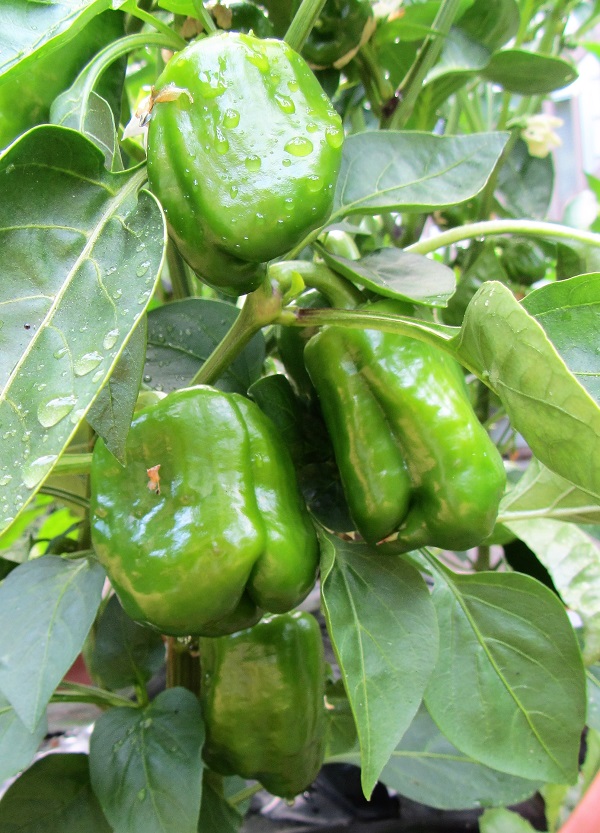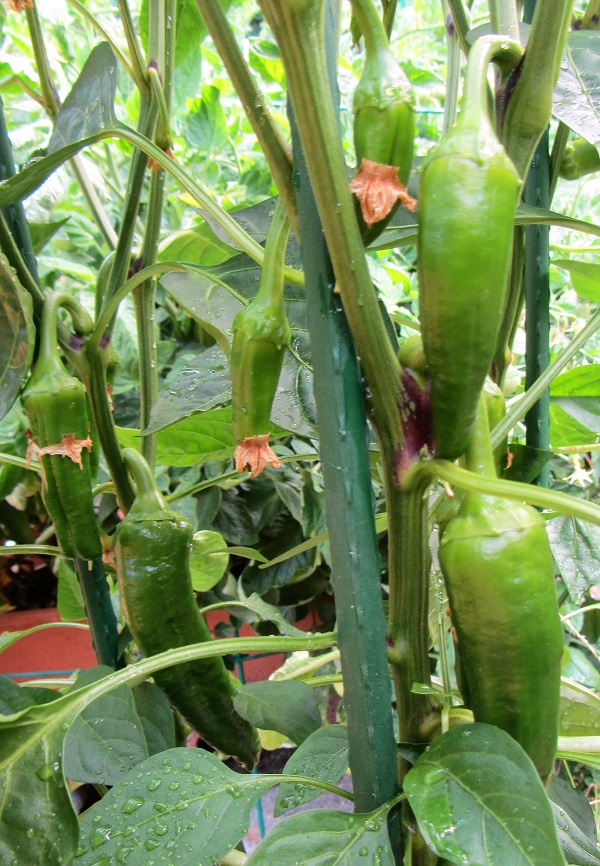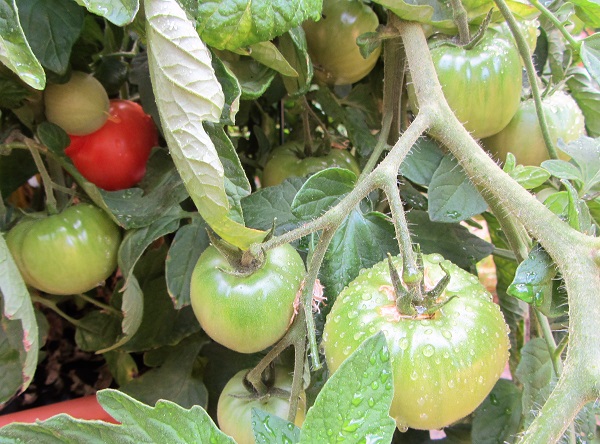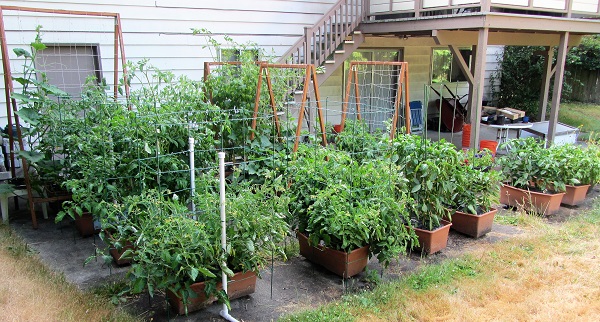We’ve been doing most of our veggie shopping at the Seattle Tilth plant sale. Descriptions are condensed from their PDF. My notes are in italics.
The List:
Tomato (2 per box):
Black Krim (2 plants) – 75 days. Indeterminate. Open pollinated heirloom. From the Black Sea region of Russia, these 10-12oz beefsteak type tomatoes have a strong, rich flavor that is common with black tomatoes. (Ed: By far our favorite tomato.)
Old German (1 plant) – 75-85 days. Indeterminate. Fruits are golden with reddish streaks. Produces large, rich and full bodied tomatoes. Great for fresh eating tomato, salads, and salsa.
Sun Gold (1 plant) – 65 days. Indeterminate. Wow! Sungold’s fruity or tropical flavor is a big hit with everyone who tastes it. Apricot-orange round 1 1/4 in. fruit. 10-20 fruits on grape-like trusses. (Ed: While the description is a little over the top they are a universal hit.)
Roma (2 plants) – 75 days. Determinant. Premium canning tomato, ideal for sauce and paste. Pear-shaped scarlet fruits are thick and meaty with few seeds. (Ed: Interestingly, the plant tags say “Roma’s Best”. Hopefully they’re the same thing we’ve been growing for years.)
Taxi (1 plant) – 65 days. Determinate, early, prolific production. The best yellow tomato for short season gardeners. Open pollinated. Expect heavy yields of mild, non-acid tomatoes for 3-4 weeks. Grows well in a container. (Ed: They do grow well in containers. In a typical year we’ll get somewhere upwards of 20 pounds per plant.)
Oregon Cherry (1 plant) – 60 days. Determinate. An early cherry tomato released from Oregon State University. The small-fruited red tomatoes are 1 1/2 inches long by 1 inch wide, and load up heavy on 1 1/2 feet tall by 2 feet wide determinate plants. These thin skinned tomatoes have a sweet flavor and are a reliable PNW treat

Zucchini (2 plants in one box):
Tromboncino – 60-80 days. Open pollinated heirloom. A Tilth favorite, the flesh of this variety has a smooth buttery texture and a mild flavor—the taste of summer! The 12 to 18” long fruits are “trombone”- shaped and can grow in curly cues or hang like
bells on a trellised vine. (Ed: Tromboncino work well for us because we garden on a concrete patio and normal zucchini would likely burn on the cement. Tromboncino grow vertically, so we save space. They’re also relatively more powdery mildew resistant. Each square on the trellis below is 8″. The fruits themselves are around 2′ long.)

Cucumber (4 plants in one box):
Marketmore 76 – 63 days. Open pollinated. In the Marketmore series, ‘Marketmore 76’ is very popular with organic growers due to its high level of disease resistance. This dark green slicing variety produces abundant, high quality, uniform fruits about 8 inches long with a wonderful cucumber flavor.
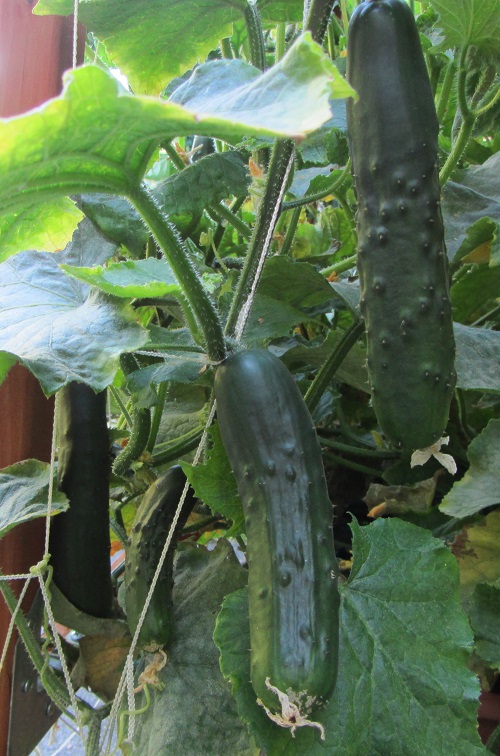
Tomatillo (2 plants in one box):
Verde – 70 days. Open pollinated. A classic deep green tomatillo with high yields, ‘Verde’ is ready when the husks have split andare drying. Very intense rich flavor which pairs well with sweet summer tomatoes and makes a fantastic salsa.
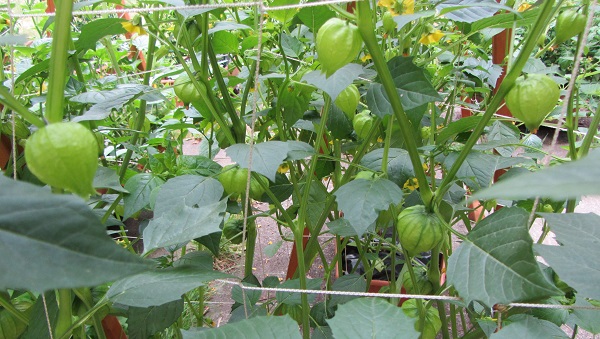
Peppers (6 per box. This year it is two boxes of Carmen and 3 plants each of Jimmy Nardello and Anaheim.):
Carmen – 60 – 80 days. Lusciously sweet when left to fully ripen to a deep red, this pepper is perfect for chopping and tossing straight into a salad. A great container plant and a good addition to a sunny veggie bed. 6 inch fruits on an upright plant.
Jimmy Nardello – 76 days. Open pollinated heirloom. Thin-walled 8″ long curved tapering pointed fruits turn deep red when ripe with shiny wrinkled skin. Great eaten raw and super tasty when fried–very prolific! This seed variety is considered by Slow Food USA to be an endangered member of their “Ark of Taste.”
Anaheim College 64 – 74 days. Open pollinated. Medium hot flavor make these short season peppers a hit for dips, sauces, stuffing with cheese
or roasting.
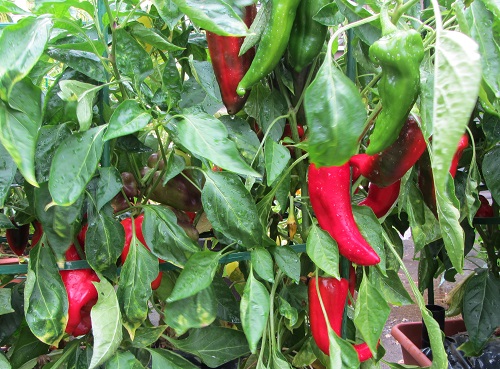
For a little background — when shopping for vegetable plants we’re looking for certain things:
- We want relatively short season plants because the growing season in the Pacific Northwest can be unpredictable. (Note that nothing is much over 80 days to maturity in the list above.)
- We typically don’t grow miniature versions of anything because it can get very fiddly to clean and process little fruits. And there tends to be more waste as a percentage of the yield.
- We’ll often select tomatoes that do well in Russia or Oregon. That’s broadly true of all the plants we grow — ideally wherever the plant is popular shares a latitude and climate similar to the Pacific Northwest.
- We generally focus on high value – high yield plants. We have limited growing space and we can buy something like corn for next to free at the height of summer.
Finally:
- It’s been my experience that people tend to grow what their parents grew. And most gardening advice is based on experience gained from small sample sizes. My sample size is small too.
- When we were starting out I hit as many “vegetable gardening” message boards as I could find, searching for people growing food near us. I tallied up what people said grew well (literally, tally sheets for recommended tomatoes, etc). We used that information as a base and we’re learning more every year.
- The nice thing about gardening is most mistakes are still edible.










